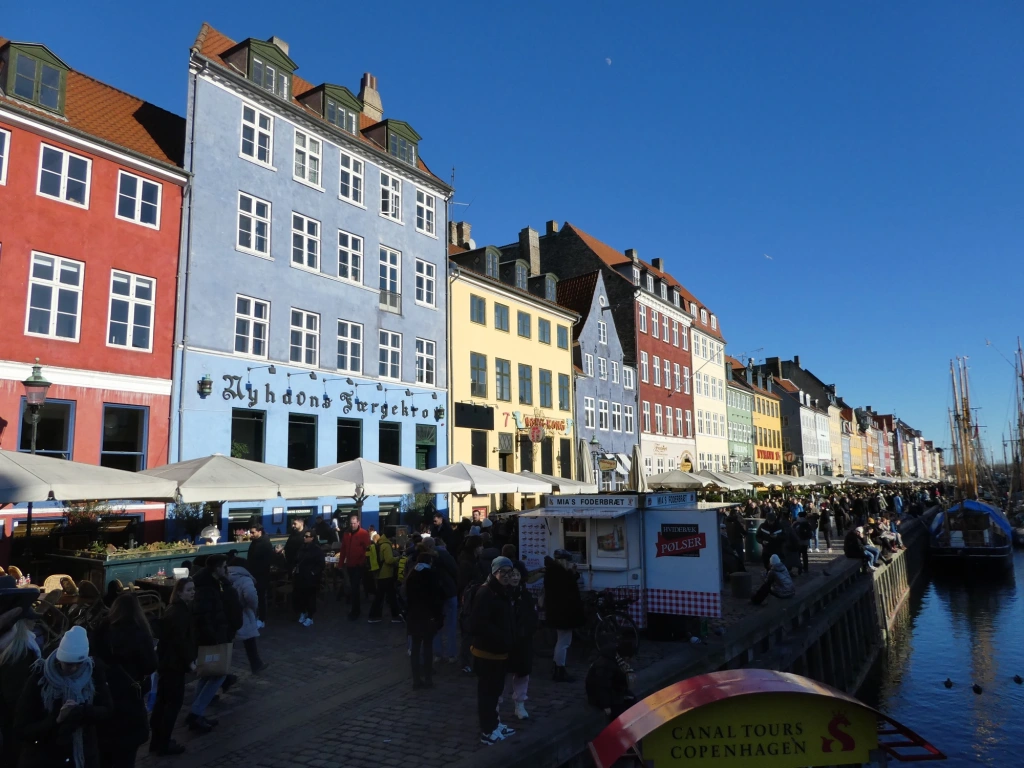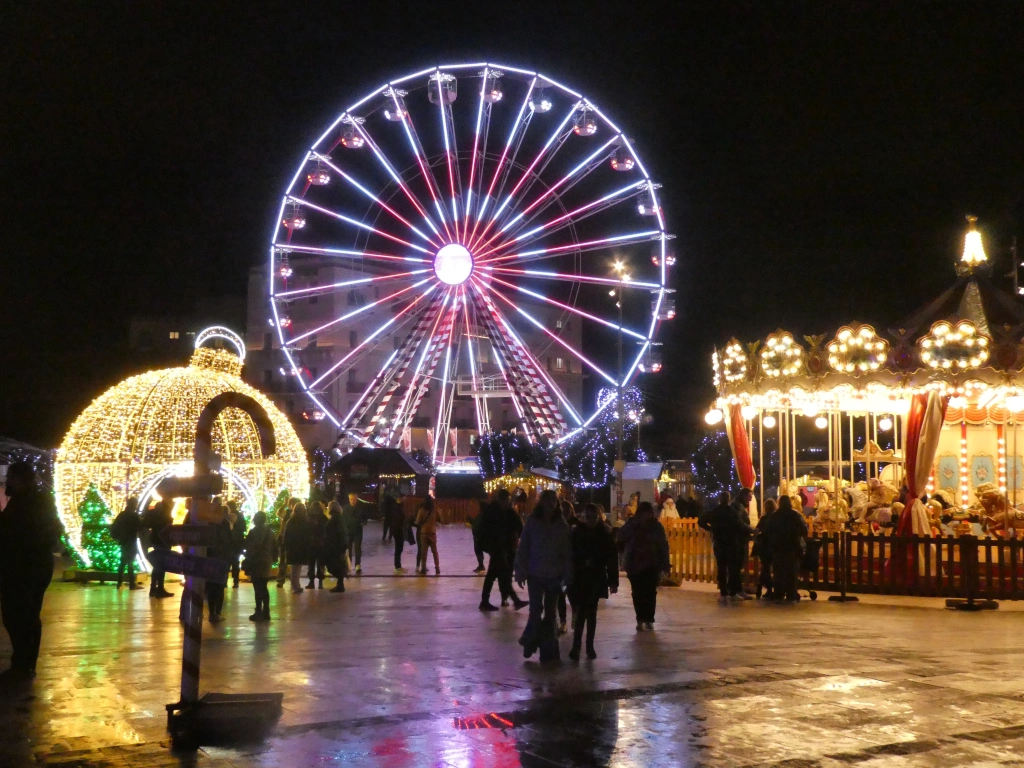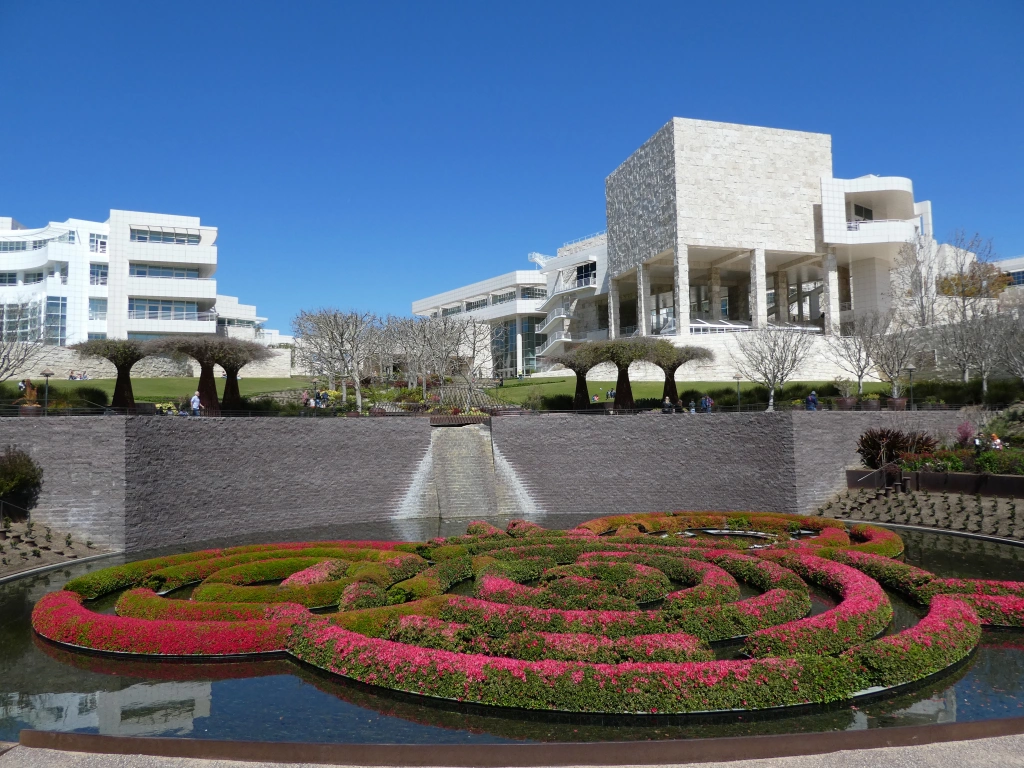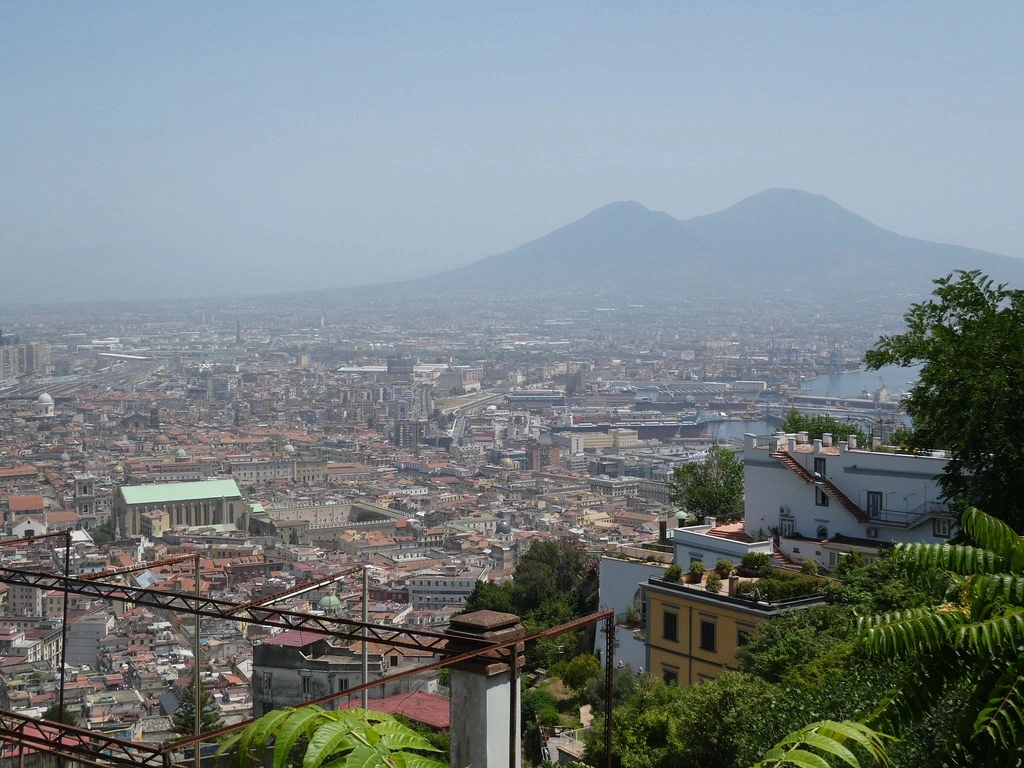After an early breakfast at the Scandic Copenhagen we set off for a visit to Christiansborg Palace, one of the city’s premier attractions. Located in Slotsholmen, the palace has an 800 year old history as Denmark’s centre of power. The present building was completed in 1928 and is used by the Royal Family for official events and for receiving foreign dignitaries.
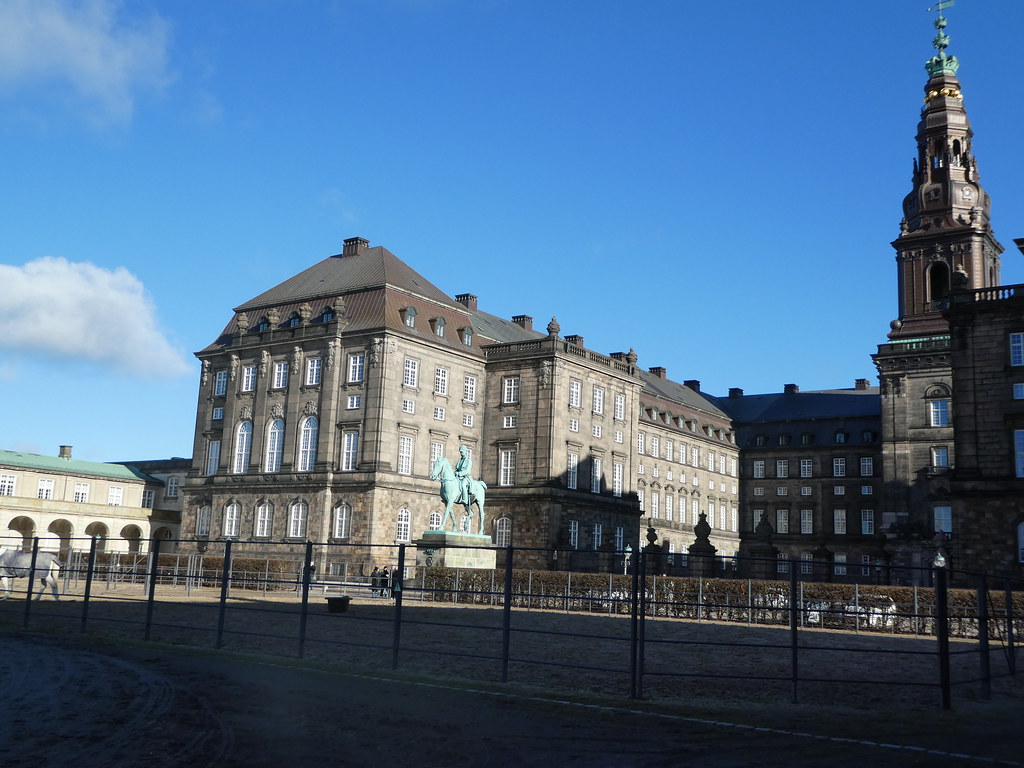
Best value tickets include admission to Christiansborg Palace, the Royal Reception Rooms, The Royal Kitchen, Stables, Ruins and Palace Chapel and cost 175 DKK (£20.09). Entrance is also included in the Copenhagen Card, making it good value if you intend to visit several of the city’s attractions and museums.
We arrived shortly after 10.00 a.m. just as the doors had opened which was perfect timing as few people were around. After putting disposable overshoes on our feet and picking up our tickets we began our self guided tour.
Royal Reception Rooms
We started with a visit to the Velvet Room. When banquets are taking place at the palace members of the Royal Family welcome guests here before proceeding into the banqueting rooms. The Velvet Room is modelled on the Sun King Louis XIVs bedroom at the Palace of Versailles in France. Along its walls, 300m of velvet wall hangings depict the Danish Coat of Arms.
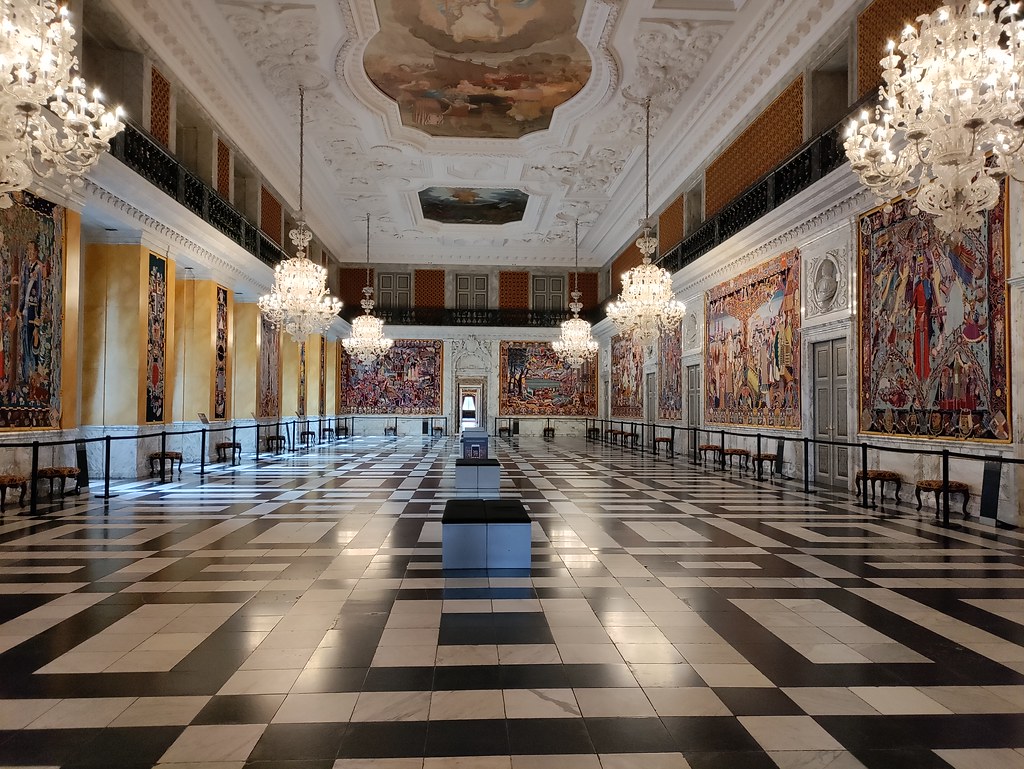
Next, we viewed the Great Hall, a magnificent setting for gala dinners when State visits are taking place. The 40m long hall is the largest room in the palace and can accommodate up to 400 guests. Its walls are dressed with sumptuous tapestries with Venetian chandeliers hanging from the ceiling.
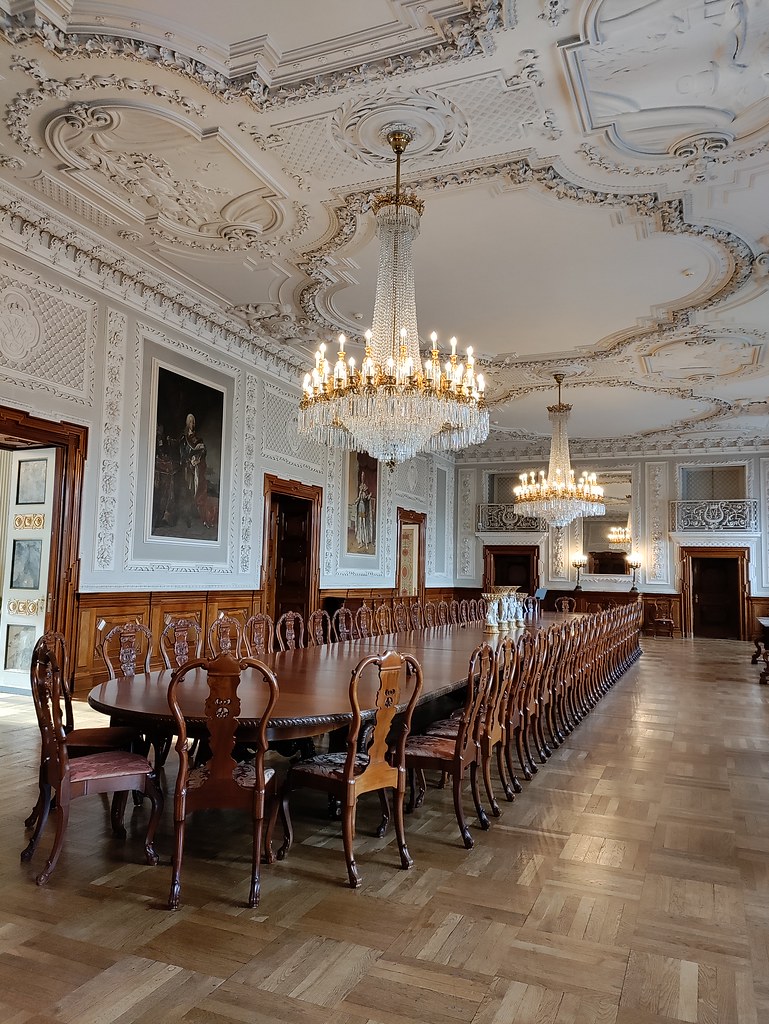
Continuing to the Dining Hall, this boasts a mahogany banqueting table seating 52 diners. The table has quite a history as when a fire broke out at the palace in 1884, steps and handrails from the King’s stairway were hastily ripped out and carried to safety. When the palace was rebuilt the wood was used to make the new table. Hanging above it are two glimmering chandeliers which were gifts from the Royal Palace of Oslo.
Moving into the Throne Room which is used for state visits of Kings, Queens, Presidents and Ambassadors, we admired its marble columns and luxurious green silk wall hangings. The King’s throne is adorned with two golden lions whilst the Queen’s throne features two gilded mythical griffins.
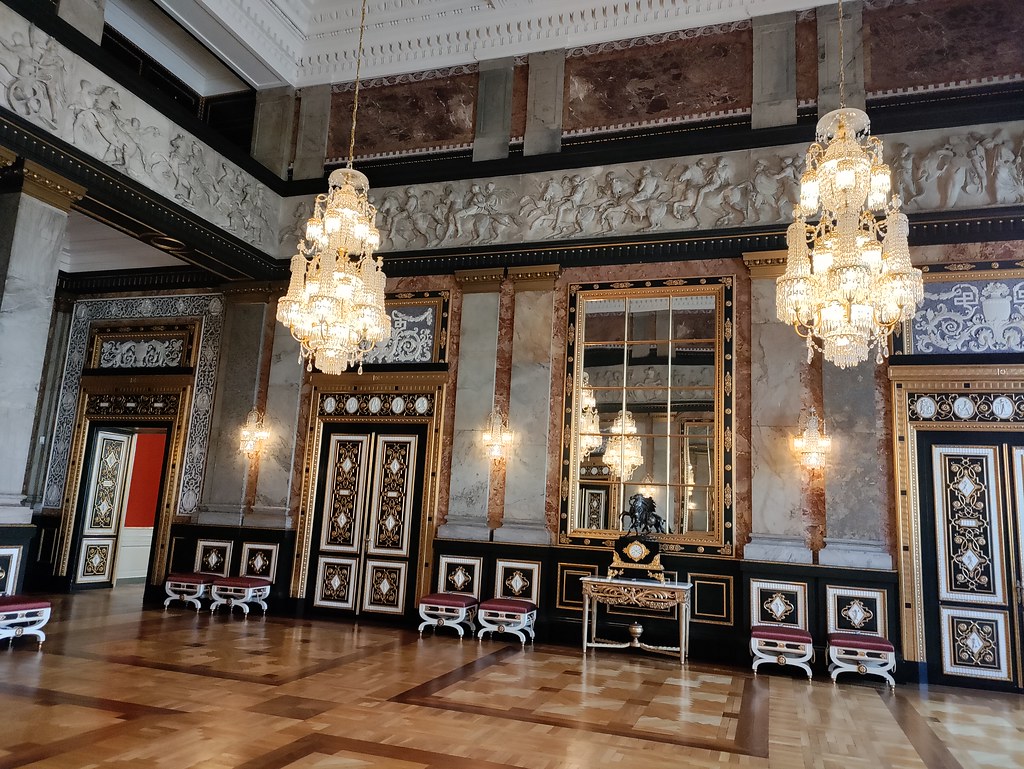
Whilst exploring the Royal Reception Rooms we also visited the Queen’s Library and the Fredensborg Room. The Palace is absolutely beautiful and I would highly recommend a visit.
The Royal Stables
The stables are the only buildings to survive from Christian VI’s Baroque palace of 1740. Although our ticket included entrance, the stables were actually closed on the Saturday morning when we visited but we were able to view two of the horses being exercised out in the courtyard. The Royal Chapel was also out of bounds for visitors at this time but as there was so much else of interest to see, this wasn’t too much of a disappointment.
The Royal Kitchen
The kitchen has been restored to its former glory enabling us to view the preparations for a typical banquet in the 1930’s. The kitchen boasts one of Europe’s largest collections of copper ware hanging from the walls and on the cupboard tops.
The Palace Ruins
The existing castle was built on the ruins of the 800 year old castle and the excavations are available to view. The largest and oldest ruin under the palace is the curtain wall from the 12th century which protected the castle from attacks. We were also able to view the foundations for the Blue Tower which is the largest in the castle. It was approaching 11.30 a.m. when we had completed our tour of Christiansborg Palace meaning that we had time to hop on a bus across to Amalienborg Palace to view the Changing of the Guard.
Changing of the Guard
The ceremony takes place daily at 12.00 noon outside Amalienborg Palace as the Danish Royal Guard set off at 11.30 a.m. from their barracks at Rosenborg Castle and march through the streets of Copenhagen.
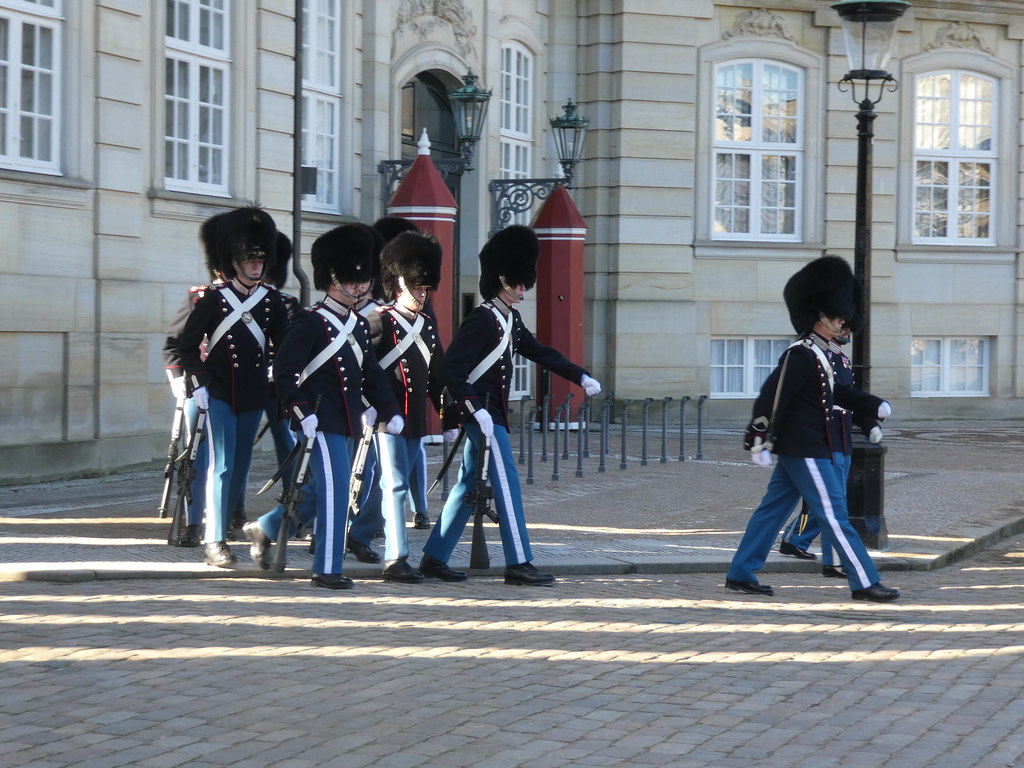
Crowds had already started to gather when we arrived at the palace square but we managed to secure a good viewpoint for the ceremony. The guards are accompanied by the Royal Life Guards Band who played a medley of jolly tunes whilst the changing of the guards was taking place. Do try and arrange your schedule to view this spectacle as it lasts around 30 minutes and is lovely to see.
Amalienborg Palace
The palace is made up of four identical buildings surrounding the square with a statue of King Frederick V from 1771 as its centrepiece. Entrance to the palace costs 90 DKK (£10.33) and is included in the Copenhagen Card.
Tickets include access to the private interiors of one of the world’s oldest monarchies so it’s a good opportunity to visit before or after watching the Changing of the Guard.
We viewed Christian X’s study, experienced the exquisite Fabergé chamber as well as viewing the Gala Hall which is still used by the Royal Family on special occasions. The history of the palace museum stretches back 150 years with the rooms still intact making it feel as if we had been taken on a journey through time reflecting the styles of the period.
Frederik’s Church
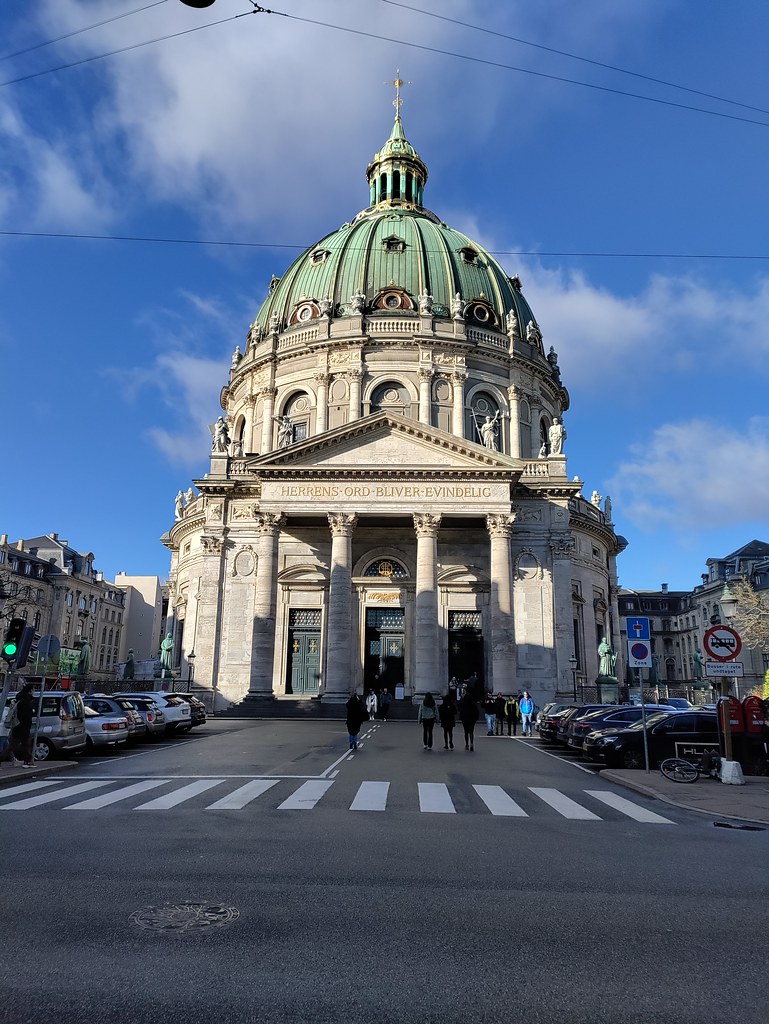
Located a short distance to the west of Amalienborg Palace stands the magnificent Frederik’s Church. This marble church is noted for its rococo architecture boasting the largest church dome in Northern Europe. It rests on 12 columns and has a span of 31m. The dome rises high above the city rooftops making it one of Copenhagen’s landmarks and its construction was inspired by St. Peter’s Cathedral in Rome. (Admission free).
Nyhavn
After enjoying a late lunch in one of the city’s cosy cafes we explored the vibrant waterside area of Nyhavn which was at one time a commercial port packed with sailors. Nowadays, its colourful, canal side homes have been renovated into bars and restaurants with their tables spilling out onto the waterfront making it a delightful place to spend an hour or two.
The famous Danish fairytale writer Hans Christian Andersen lived in three houses along the street at different times in his life and it is thought to be where he gained his inspiration for writing fables.
We walked along to Christiania, a 15 minute walk from Nyhavn, admiring boats from the towpath before crossing a bridge to get there. Christiania is a self proclaimed autonomous neighbourhood located on a former military base and it was pleasant to enjoy an afternoon stroll exploring this district.
Home of Carlsberg
Next we caught a train to Carlsberg, taking just 10 minutes. As the name suggests, we’d come to visit the Home of Carlsberg which is a 10 minute walk from the railway station. Standard admission for the Carlsberg Experience tour is 190 DKK (£21.82) and needs to be booked in advance. The Home of Carlsberg is also included in the Copenhagen Card. Home of Carlsberg.
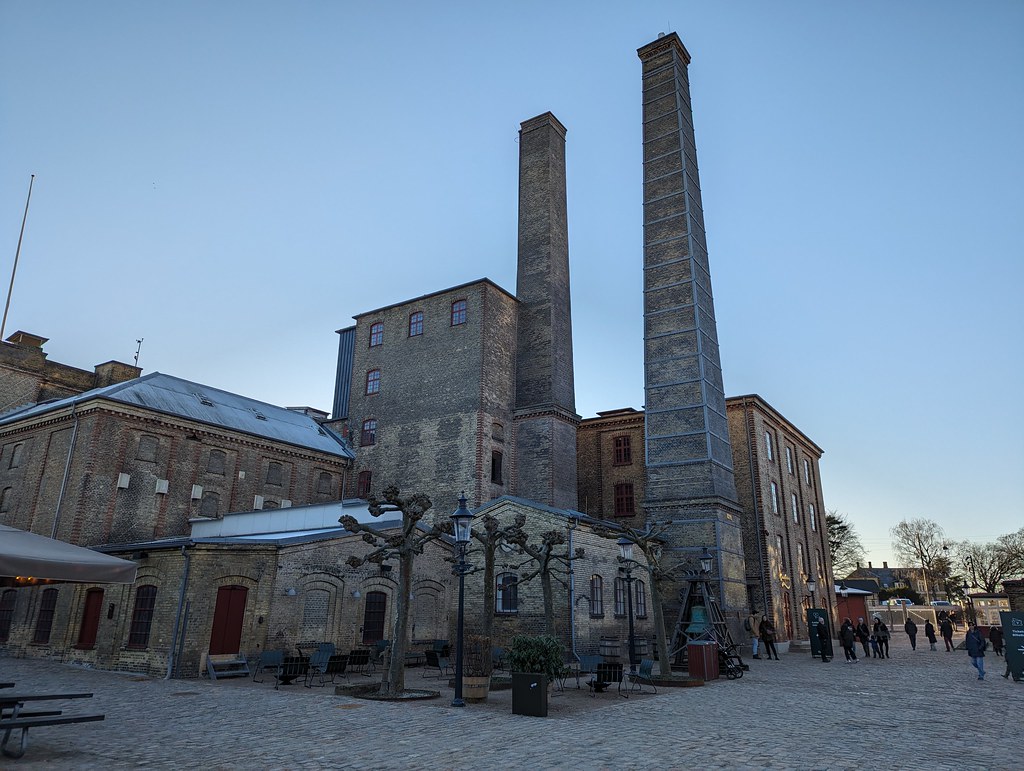
Self guided tours start with a refreshing glass of Carlsberg in the Welcome Bar whilst a guide outlines the tour which takes approximately one hour. The interactive exhibition takes visitors on a journey through the history of Denmark’s famous beer. The tour is located in Carlsberg’s first brewery in Valby.
We learnt from the tour that Carlsberg was established by J.C. Jacobsen in 1847 who first started brewing lager in his own cellar at the age of 36. He named the company Carlsberg after his son Carl and since the brewery was located on a hill he added ‘Bjerg’, the Danish name for mountain. Video montages relate the story of how in 1882 his son started his own company in direct competition which caused a huge rift between them but later both companies merged together.
In addition to learning about the history of the Carlsberg family we also learnt about the history of their lager and the innovative brewing techniques used to create the beer. We also enjoyed browsing through the collection of vintage poster adverts and viewing the impressive unopened bottle collection in the basement. This vast collection includes 22,000 beer bottles from all over the world displayed in glass cabinets which is fascinating to see.
After completing the tour we explored the stables. When the brewery was founded, it relied heavily on the 300 horses it kept in its stables for distributing beer across the country. There are now just seven horses kept in the newly renovated stables who are well cared for and brand ambassadors at annual festivals and parades. Within the stable block, several vintage vehicles are also on display so there is much to see and do at the Home of Carlsberg.
Last but not least, our Experience tickets entitled us to enjoy large glasses of Carlsberg in their attractive bar which has additional seating outdoors in the courtyard for warmer days. Visiting the Home of Carlsberg proved to be both an interesting and enjoyable activity and I’d recommend adding this to your itinerary if time allows.

